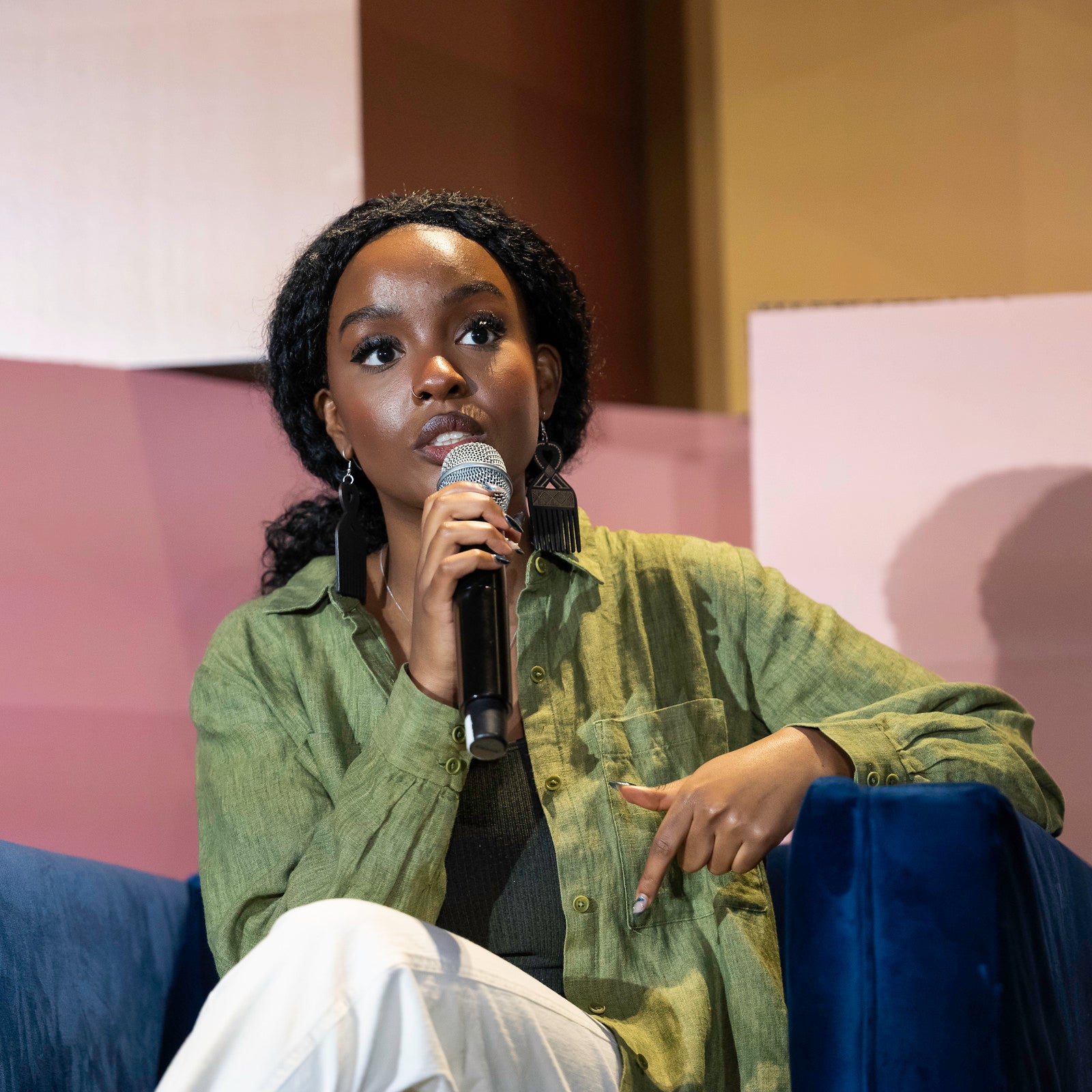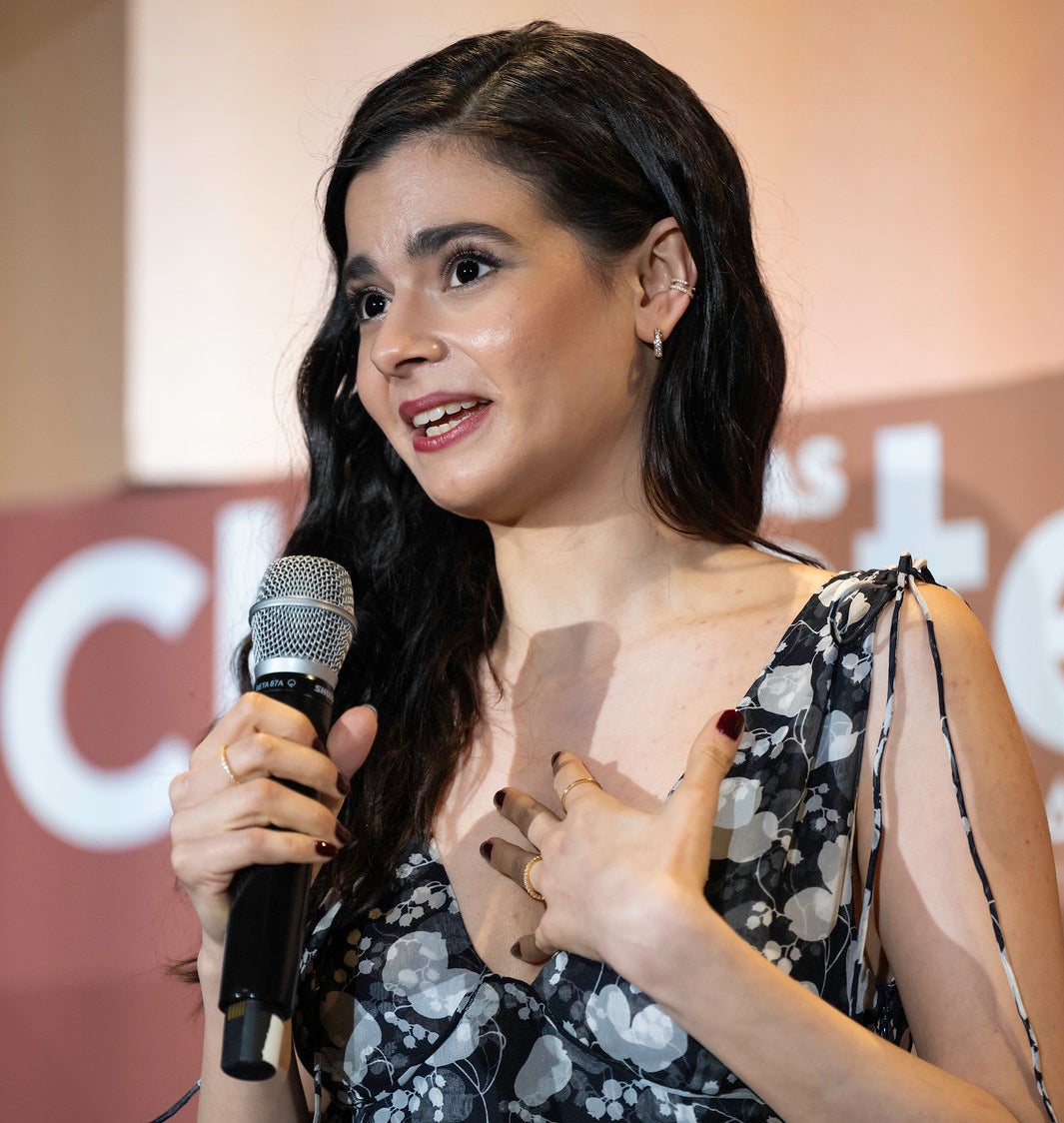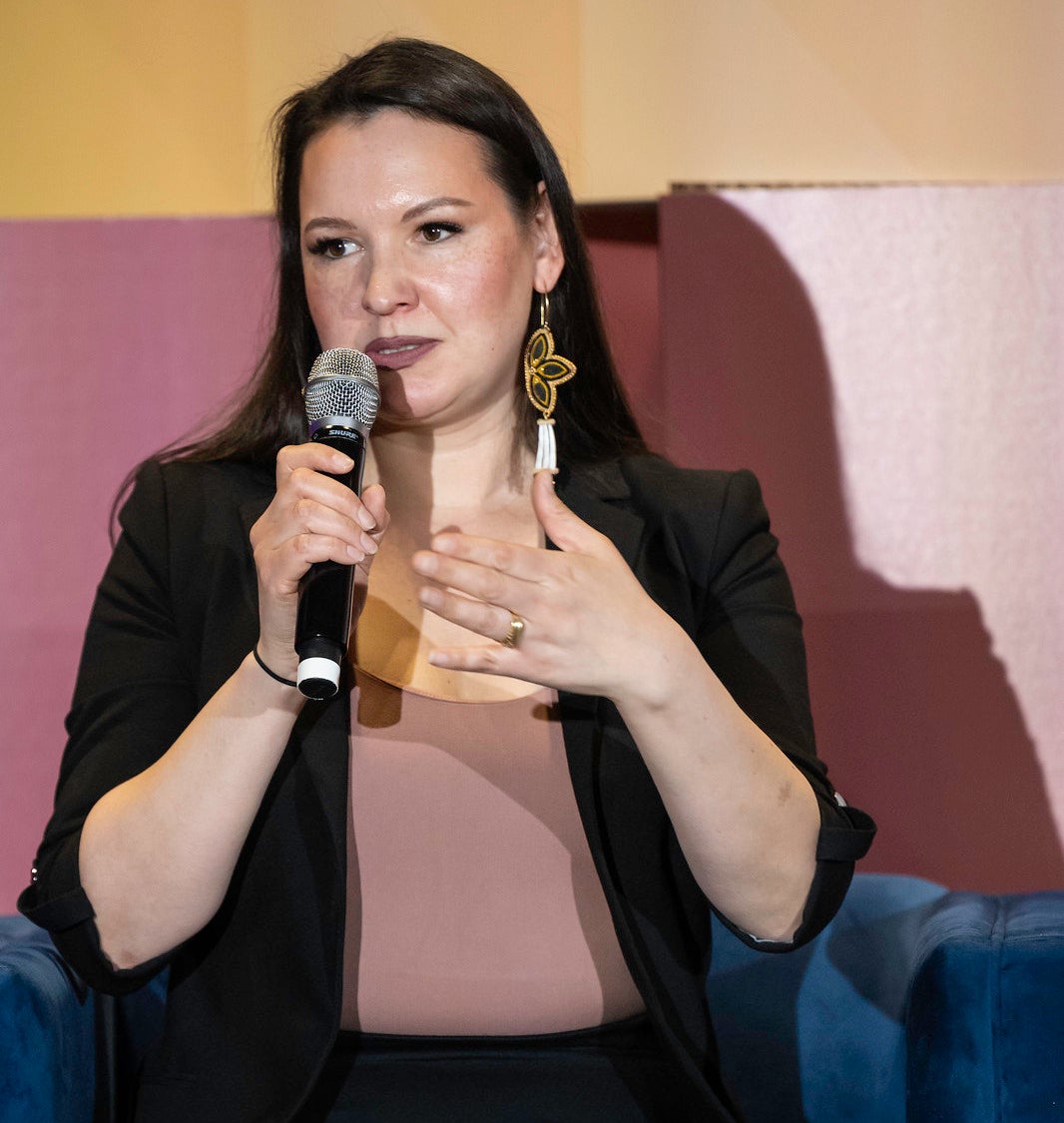The climate crisis is not “gender neutral.” Research overwhelmingly shows that climate change disproportionately affects women and girls globally, exacerbating existing gender inequalities and threatening their livelihoods, health, and safety. Though Women’s History Month is coming to a close, conversations centering the voices of women in the climate space must continue.
At Aspen Ideas: Climate, women leaders came together to discuss the burden on women and girls—particularly in securing resources like food and water—and how their innovation and ingenuity can be major contributors to climate solutions. Here are some of the key takeaways from the conversation, which was moderated by Lola Adedokun, executive director of the Aspen Global Innovators Group and co-chair of the Aspen Institute Forum on Women and Girls.
Women, particularly Black women, experience the brunt of climate injustice.
Climate change is a “threat multiplier,” meaning that it exacerbates social, political, and economic challenges and tensions that already exist. Given the historical context of women’s disenfranchisement across the globe–subjugation that has created disparities in information, mobility, and decision-making–it is unsurprising that the climate crisis amplifies these existing gender inequities.
But while the effects of climate change threaten women and girls as a demographic at a heightened level, its impacts are not necessarily equal for all under that umbrella. Black women and girls bear an even heavier burden from the impacts of climate change because of the historic and continuing impacts of colonialism and misogynoir. On top of this, Black women continue to be underrepresented in the workforce across the environmental and climate sectors.
“People of color make up nearly 40% of the U.S. population, but we don’t exceed a 12-16% ‘green ceiling’ of representation in the climate sector, and Black women actually have among the lowest retention rate,” shared Wanjiku “Wawa” Gatheru, founder of Black Girl Environmentalist, a nonprofit organization that aims to address the pathway and retention problem in the climate movement for Black girls, women, and gender-expansive people.

Wawa Gatheru
“There’s this really interesting disparity, I think, when we talk about the ways in which Black women and girls aren’t included in these conversations of environmental decision-making,” Gatheru expressed. “Because we are already taking the lead on solutions in our communities as a means of survival.”
“We talk about eco-feminism, but there’s also this theory of change and a framework we need to talk about: eco-womanism. It talks about the very unique expertise and narratives that Black women–across the diaspora–have as stewards of our communities and stewards of the Earth.”
Storytelling puts emotion behind the numbers.
By 2050, climate change will push up to 158 million more women and girls into poverty, and lead to 236 million more women facing hunger. These staggering numbers feel daunting, almost insurmountable–for some, they’re enough to completely shut down and become detached from the issue entirely. So how do we stay optimistic and motivated to do the work necessary to prevent these numbers from becoming reality? How can we communicate the threats and also keep people engaged?
Most people know Aria Mia Loberti from her breakout role in Netflix’s All The Light We Cannot See, based on the Pulitzer Prize-winning novel of the same name. But before her acting career began, Loberti was already an accomplished academic, studying and researching ancient rhetoric and the reception of ancient women’s voices.

Aria Mia Loberti
Her expertise in rhetoric and her talent as an actress grant her a unique perspective on the power of storytelling, and the impact that narrative can have on how we see certain issues. “I get lost in data sometimes, it’s so dismal to look at statistics and feel like I can do nothing. And I feel like that’s really common for young people to have that sense of–what can I really do?” she said.
Storytelling “puts someone who you can feel, you can sense, you can see them in your mind’s eye, to something that can seem really arbitrary and unreachable. There’s nothing more reachable than the human experience, the human condition, the connection we all have with one another.”
In addition to bringing a sense of humanity to statistics, Gatheru echoed the importance of storytelling as it relates to narrative change.
“Black women and girls are amongst the most impacted by these issues, but are the least represented in climate and environmental narratives. When we think about an environmentalist, we don’t often think of a Black girl, a Black woman, Black gender-expansive folks. That’s by design. It’s quite frustrating,” she said.
Much of Gatheru’s work at Black Girl Environmentalist is around narrative change and privileging the experiences of Black women in the climate movement. But she’s faced pushback from people who disagree with the importance of narrative change as a priority in this work–or perhaps more accurately, people who don’t understand its power.
“We can’t solve the climate crisis without accurately describing it, and without people taking back agency to tell their own stories,” she said.
We cannot see vulnerable people and populations only as victims, because if so, we’ll never be able to view them as leaders.
Raina Thiele grew up in rural Alaska–but not the kind of rural you might expect.
“When I talk about rural in the Alaska context, it’s probably a little bit different than what folks think about down here,” she clarified to the audience. “The communities I grew up in–there were no roads to them or from them. You had to fly in, take a snowmobile in the winter, boat on the river systems and lake systems.”
Thiele now serves in the U.S. Department of the Interior as senior advisor for Alaska affairs & strategic priorities. She is Dena’ina Athabascan and Yup’ik–her family has been living on the land that is now called Alaska for over 10,000 years.
“There are communities in Alaska that are literally falling into the ocean because of rising sea levels and increased storm activity. These folks have no internet access, little running water, minimal cell phone access. These folks see the impacts every single day–it’s impacting their ability to live, to send their kids to school.”

Raina Thiele
But while the Indigenous communities in Alaska may be vulnerable to the impacts of climate change, they also are uniquely positioned to provide an important and deeply necessary perspective. Indigenous communities like those Thiele describes in Alaska can speak firsthand to the impacts of climate change–what it looks like, what it feels like to be on the frontline of this crisis.
“We have to elevate the voices that have not really been as heard or as listened to. There are a lot of voices in this space that aren’t making it into the circles they need to be in. Integrate perspectives and approaches to decision-making that are based in the lived experiences of folks who are seeing impacts on a daily basis. Elevating those voices–the folks who are really on the frontline of climate change in the Arctic and Alaska, which is warming faster than any other place in the country–calling in these voices and ensuring that they’re at the table with folks from larger organizations is critical.”
Loberti also expressed a need for women to look inward and defy what is often expected of us.
“Sometimes, we as young women, are afraid to take up space. Especially when we are–or look–a bit younger, we’re afraid to exude authority and command a space. That’s something I have really worked on,” she confessed. “I think we need to collectively be more comfortable taking up space. With our bodies, with our voices, with the energy of our youth and our spirit.”
Part of this goes beyond just how we view these people and populations. It’s about whether we even view and acknowledge them at all.
“We are able to describe the dynamics that exist in regards to women and how we experience the climate crisis because of researchers that are helping tell this story,” Gatheru explained. “But we have a huge gap in environmental scholarship of understanding the ways in which the climate crisis is impacting gender-expansive folks. It is dire.”
“When we think about communities that are experiencing the brunt of an issue, if folks aren’t even being included as a demographic to be assessed, how are we well-positioned to support them? And how are they well-positioned to support themselves in a world where obtaining resources, funding, and support to scale initiatives, relies on the necessity of being able to point to research?”
Leadership is lifting as you climb.
All three of the women took time to acknowledge the women that had inspired or helped them get to where they are today.
For Raina Thiele, the answer was obvious–her boss, Secretary of the Interior Deb Haaland. “It has been incredible to see her enter this role and really shift how policy-making is done and what perspectives are elevated within the Department of the Interior. Having her in that role and bring this very new approach to the forefront that hasn’t been there before is amazing.”
Wawa Gatheru gave shout-outs to two Black women: prolific climate writer Mary Annaïse Heglar and wildlife ecologist Dr. Rae Wynn-Grant. “Both of these women are powerful examples of what it looks like to lead not only in front of the camera, but also behind the scenes.”
Aria Mia Loberti also had two answers–the first was Professor Debra Hawhee. “When I was working on my PhD, I really wanted to include climate and naturalism in my work more. Her work on rhetoric with animals and rhetoric and the environment was very inspiring to me.”
She also made a point to highlight not one single woman, but a group–the young women activists who couldn’t be there.
“We all have the privilege of being here, but there are so many people around the world who cannot necessarily be a part of this conversation unless we can go share knowledge with them and listen to what they’re doing.”
Photos by Dan Bayer.

